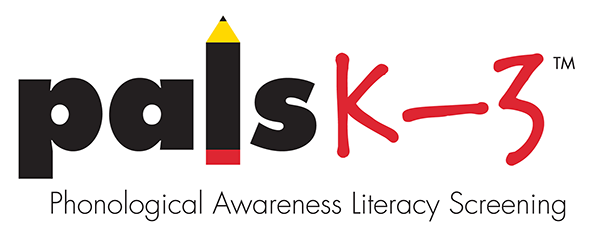PALS 1-3 Assessment
PALS 1-3 is used with students in 1st through 3rd grades to identify students at risk of reading difficulties. These assessments are designed to measure students' knowledge of important literacy fundamentals and can be used to provide teachers with information to help guide their teaching.
Entry Level
PALS 1-3 is leveled instruments that are used to (a) screen and identify students in need of additional instruction based on their Entry Level task scores, and (b) identify specific skill deficits in students whose Entry Level scores do not meet a benchmark that represents minimum grade-level criteria. Those students then proceed to subsequent levels of PALS (Level B tasks, and Level C tasks).
Spelling
Students are asked to spell lists of words representing phonics features necessary to be successful at each grade level. Teachers score spelling based on the specific phonics features that are represented in each word.
Word Recognition in Isolation
The capacity to obtain meaning from print depends strongly on accurate, automatic recognition of core reading vocabulary at each grade level. As a result, PALS provides eight graded word lists to gauge students' word reading throughout the year.
Level A: Oral Reading in Context
The Oral Reading in Context task is used to assess three components of oral reading: (a) oral reading accuracy, (b) phrasing, intonation, and expression, and (c) reading rate.
Passage Reading
Students are asked to read A leveled passage while the teacher takes a record to determine the student's instructional reading level.
Timing Passage Readings
Teachers can time passage readings with a stopwatch. Entering the student's time in minutes and seconds into the PALS score entry system enables the system to calculate the student's reading rate in words per minute.
Comprehension
Comprehension is assessed as part of the Oral Reading in Context task. After reading a passage out loud, students answer a set of comprehension questions about that passage. The comprehension questions are in a multiple-choice format.
Fluency
Oral reading fluency is rated with the PALS fluency rating guide. Students' oral reading is scored on a 3-point scale according to their phrasing and expression.
Level B: Alphabetics
Students whose Entry Level scores do not meet minimum criteria must be further assessed with Level B tasks.
Alphabet Recognition
The single best predictor of early reading achievement is accurate, rapid identification of upper- and lower-case letters of the alphabet (Adams, 1990). PALS 1-3 assesses a student's ability to name the 26 lower-case letters of the alphabet.
Letter Sounds
Students are asked to produce the sounds of 23 letters of the alphabet, as well as three digraphs.
Level C: Phonemic Awareness
If Level B benchmarks are not met, children are routed to Level C to assess phonological skills such as blending and segmenting speech sounds.
Blending
In the Blending task, students are asked to blend individual phonemes together to come up with a word (e.g., /c/ + /a/ + /t/ = cat). Items move from two-phoneme words to four-phoneme words.
Sound-to-Letter
The Sound-to-Letter task requires phoneme segmentation in addition to knowledge of letter sounds. The teacher says a word (e.g. map); the student segments a specific phoneme within that word and tells the teacher the letter that represents either the beginning, middle or ending phoneme in that word.



